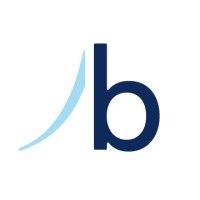预约演示
更新于:2025-09-09
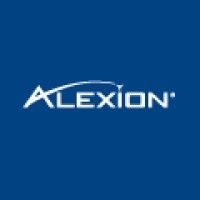
Alexion Pharmaceuticals, Inc.
更新于:2025-09-09
概览
标签
其他疾病
免疫系统疾病
内分泌与代谢疾病
单克隆抗体
纳米抗体
双特异性抗体
疾病领域得分
一眼洞穿机构专注的疾病领域
暂无数据
技术平台
公司药物应用最多的技术
暂无数据
靶点
公司最常开发的靶点
暂无数据
| 排名前五的药物类型 | 数量 |
|---|---|
| 单克隆抗体 | 12 |
| 小分子化药 | 7 |
| 腺相关病毒基因治疗 | 4 |
| 纳米抗体 | 3 |
| 合成多肽 | 3 |
| 排名前五的靶点 | 数量 |
|---|---|
| C5(补体C5) | 5 |
| CFD(补体因子D) | 4 |
| TTR(转甲状腺素蛋白) | 3 |
| C3(补体C3) | 2 |
| GALA(α-半乳糖苷酶) | 2 |
关联
42
项与 Alexion Pharmaceuticals, Inc. 相关的药物靶点 |
作用机制 TTR调节剂 |
在研适应症 |
非在研适应症 |
最高研发阶段批准上市 |
首次获批国家/地区 美国 |
首次获批日期2024-11-22 |
靶点 |
作用机制 CFD抑制剂 |
在研适应症 |
最高研发阶段批准上市 |
首次获批国家/地区 日本 |
首次获批日期2024-01-18 |
作用机制 MEK1抑制剂 [+1] |
非在研适应症 |
最高研发阶段批准上市 |
首次获批国家/地区 美国 |
首次获批日期2020-04-10 |
344
项与 Alexion Pharmaceuticals, Inc. 相关的临床试验NCT06015750
An Interventional, Prospective Open-Label Study of Immunosuppressive Therapies to Mitigate Immune-Mediated Loss of Therapeutic Response to Asfotase Alfa (STRENSIQ®) for Hypophosphatasia (RESTORE)
The primary objective of this study is to evaluate the effect of immunosuppressive therapy (IST) in participants treated with asfotase alfa who demonstrate immune-mediated loss of effectiveness (LoE).
开始日期2026-07-29 |
NCT07160608
Phase 2, Randomized, Double-Blind, Placebo-controlled, Parallel-Group, Multicenter Study to Evaluate the Safety and Efficacy of Tarperprumig in Adult Participants With Anti-Neutrophil Cytoplasmic Antibody-Associated Vasculitis (I TRANSCEND)
The primary objective of this study is to evaluate the safety and tolerability of tarperprumig in participants with newly diagnosed or relapsing anti-neutrophil cytoplasmic antibody (ANCA)-associated vasculitis.
开始日期2025-10-31 |
NCT07157787
A Phase 2a, Randomized, Double-blind, Placebo-controlled, Parallel-Group, Multicenter Study to Evaluate the Efficacy, Safety, Tolerability, Pharmacokinetics, Pharmacodynamics, and Immunogenicity of ALXN1920 in Adult Participants With PMN (Primary Membranous Nephropathy) Who Are at a High Risk for Disease Progression
The primary objective of this study is to evaluate the efficacy of ALXN1920 compared with placebo in participants with PMN who are at a high risk for disease progression using 24-hour urine protein creatinine ratio (UPCR).
开始日期2025-10-17 |
申办/合作机构 |
100 项与 Alexion Pharmaceuticals, Inc. 相关的临床结果
登录后查看更多信息
0 项与 Alexion Pharmaceuticals, Inc. 相关的专利(医药)
登录后查看更多信息
611
项与 Alexion Pharmaceuticals, Inc. 相关的文献(医药)2025-10-01·Multiple Sclerosis and Related Disorders
ACT with NMOSD: A targeted, telehealth-delivered mental health intervention for patients & caregivers
Article
作者: Nurse, Chelsi N ; Wakschal, Emily ; Peppers, Charles L ; Deshpande, Ankita ; Esiason, Darcy C ; Andrews, Leigh ; Erler, Wendy ; Levy, Michael ; Hattrich, Tom ; O'Hayer, C Virginia ; Bruschwein, Heather ; Leist, Thomas ; Kushner, Hallie M ; Smith, Patrick J ; Drescher, Christopher F
PURPOSE:
The rare, unpredictable, debilitating nature of neuromyelitis optica spectrum disorder (NMOSD) constitutes a unique psychological burden. This single-arm, pilot clinical trial examined the effectiveness of Acceptance and Commitment Therapy (ACT) tailored to meet the psychological burden of NMOSD, a brief telehealth-delivered intervention, targeting this burden.
METHODS:
Forty-three adults with NMOSD (76 % aquaporin-4 seropositive (AQP4+)) in USA, with elevated anxiety and/or depression completed 6-weeks of an experiential talk therapy designed to increase psychological flexibility and valued action, specifically tailored to address the psychological burden of NMOSD: Acceptance and Commitment Therapy (ACT) w NMOSD. Patients attended via Zoom, along with 22 caregivers, providing baseline, posttreatment, and follow-up measures of depression, anxiety, cognitive fusion, psychological flexibility, valued living, disability, sleep, fatigue, and pain. Linear mixed effect models examined changes in repeated measures of all outcomes, controlling for age, sex, disability, AQP4 serostatus.
RESULTS:
Participants were mostly female (84 %) and Caucasian (56 %), with baseline mild depression (mean 15.4 [SD = 8.7]) and moderate anxiety (mean = 13.5 [SD = 9.3]). Most participants (93 %) completed all treatment sessions and study assessments. Pre-to-post treatment analysis showed clinically meaningful reductions in depression (15.4 (12.8, 19.0) to 11.1 (8.3, 13.8) P<.001;) and anxiety (13.5 (11.2, 15.7) to 10.0 (7.5, 12.4) P ≤.005). Parallel improvements in cognitive fusion (39.6 (35.6, 43.6) to 33.7 (29.6, 37.7) P<.001), psychological acceptance (20.0 (17.3, 22.8) to 17.0 (14.2, 19.8) P < 0.002), valued living (49.2 (43.2, 55.3) to 60.5 (54.4, 66.6) P<.001), and sleep quality (10.1 (9.0, 11.2) to 8.3 (7.1, 9.5), P<.001) support the overall benefit of ACT to mental health. Improvements remained at 3-month follow-up. Disability status, pain, fatigue, were unchanged, as expected.
CONCLUSIONS:
ACT with NMOSD is a promising innovative targeted mental health intervention for adults with NMOSD with lasting benefits.
CLINICALTRIALS:
gov ID # NCT05840055 Supported by Alexion Pharmaceuticals.
2025-08-01·LABORATORY INVESTIGATION
Validation and Prospective Testing of a High Sensitivity, Quantitative Analytic Assay for HER2 on Histopathology Slides
Article
作者: Scott, Liam ; Fulton, Regan ; Khaimova, Revekka ; Rimm, David L ; Chan, Nay N N ; He, Mengni ; Liebler, Daniel C ; Robbins, Charles J ; Benanto, Julia ; Gaule, Patricia ; Bates, Katherine
The recent approval of antibody drug conjugates (ADCs) targeting HER2 (like Trastuzumab Deruxtecan or T-DXd) have led to challenges for the immunohistochemical (IHC) companion diagnostic test since the test was optimized for gene amplified levels of HER2. Here we develop and validate an objective test for low level HER2 expression toward more accurate selection of patients for T-DXd. We validated the high-sensitivity HER2 assay using a mix of the requirements for an IHC assay and that of a ligand binding assay. Then we prospectively tested it on 316 core biopsy specimens received by Yale Pathology Labs from August 2022 to August 2023. Using a 40-case breast cancer tissue validation set, we find very high accuracy and precision with a coefficient of variation below 10% and define a reportable range for the assay in amol/mm2. These prospective cases show the dynamic range of HER2 expression, but also the discordance of pathologist scores with quantitative measurements, especially in the low range of HER2. We find that 6% of the cohort was below the limit of detection of this more sensitive assay while 71% of the IHC 0 cases were above the limit of quantification. Efforts are underway to determine a possible threshold expression level required for T-DXd response. In summary, this assay validation study provides a method for accurate, objective measurement of HER2 and has the potential to improve selection of patients for T-DXd or similarly targeted ADC therapies in the future.
2025-07-15·JOURNAL OF CLINICAL INVESTIGATION
The tumor microenvironment of non–small cell lung cancer impairs immune cell function in people with HIV
Article
作者: Schalper, Kurt ; Talmon, Ronan ; Lin, Ya-Wei ; Osmani, Lais ; Gu, Jianlei ; Emu, Brinda ; Salahuddin, Syim ; Zhao, Hongyu ; Yusuf, Ramsey ; Mehta, Sameet ; Desai, Shruti S ; Ranjan, Kishu ; Kluger, Yuval ; Kang, Insoo
Lung cancer is the leading cause of cancer mortality among people with HIV (PWH), with increased incidence and poor outcomes. This study explored whether the tumor microenvironment (TME) of HIV-associated non-small cell lung cancer (NSCLC) limits tumor-specific immune responses. With a matched cohort of NSCLC samples from PWH and from people without HIV (PWOH), we used imaging mass cytometry, a linear mixed-effects model, and an artificial intelligence-based (AI-based) PageRank mathematical algorithm based on spectral graph theory to demonstrate that HIV-associated tumors have differential distribution of tumor-infiltrating CD8+ and CD4+ T cells, enriched for the expression of programmed cell death 1 (PD-1) and lymphocyte-activating gene 3 (LAG3), as well as activation and proliferation markers. We also demonstrate higher expression of immunoregulatory molecules (PD-L1, PD-L2, B7-H3, B7-H4, IDO1, and VISTA) among tumor-associated macrophages. Discrimination of cells between tumors from PWH versus those from PWOH was confirmed by spectral graph theory with 84.6% accuracy. Furthermore, we noted differences in spatial orientation of immune cells within the TME of PWH compared with PWOH. Additionally, cells from PWH, compared with those from PWOH, exhibited decreased tumor killing when exposed to HLA-matched NSCLC cell lines. In conclusion, our study demonstrates that the HIV-associated TME sustained a unique immune landscape, showing evidence of immune cells with enhanced immunoregulatory phenotypes and impaired antitumor responses, with implications for responses to immune checkpoint blocker therapies.
1,383
项与 Alexion Pharmaceuticals, Inc. 相关的新闻(医药)2025-09-09
New Delhi: UK Pharma major
AstraZeneca India
arm has announced the launch of its C-5 inhibitor, Eculizumab in India
The drug is approved by the CDSCO for the treatment of rare, life-threatening disease
Paroxysmal Nocturnal Hemoglobinuria
(PNH) and
atypical Hemolytic Uremic Syndrome
(aHUS) in both adults and children.
In India the pharma giant India arm has secured approval for the import, sale, and distribution of the product.
Eculizumab, a novel monoclonal antibody developed by Alexion Pharmaceuticals, Inc, later became part of the UK major portfolio following its acquisition of Alexion for around $39 billion in 2021.
The drug is designed to block the C5 protein which damages blood cells and kidney tissues in conditions like PNH, aHUS.
“The launch of Eculizumab as India’s first approved anti-complement therapy demonstrates our dedication to delivering innovative medicines at the earliest opportunity, especially where there is significant unmet medical need,” said Praveen Akkinepally, Country President and Managing Director, AstraZeneca India.
In the US the drug is marketed under the brand name ‘
Soliris
’ and has been accused of evergreening the patent with minor increments in the country. The therapy compositions are set to lose their patent protection by 2027.
According to AstraZeneca 2024 annual sales, Soliris (Eculizumab) is the company’s second leading rare disease asset with net world wide sales of $2.58 billion (~around Rs 22,000 crore).
By
Online Bureau
,

上市批准并购专利到期
2025-09-08
▼
9月26-29日,BiG将召开以「创新出海 云起潮升」为主题的第十一届IMPACT年会,9月27日下午分论坛四:全球视角,MNC与顶级VC的战略布局上,我们邀请了五家MNC高管,一起聊一聊跨国药企的中国棋局:BD热点的寻猎、Biotech价值的反哺与未来生态!
作者|momo
阿斯利康曾凭借明星药物风光无限,却也在专利悬崖袭来时跌入谷底,一度陷入至暗时刻。然而,通过果断的战略重组、聚焦肿瘤与自免领域,阿斯利康成功走出阴霾,重回行业前沿。
01
风暴降临
阿斯利康在21世纪初曾是全球制药行业中最耀眼的企业之一。其营收从2000年的142.28亿美元跃升至2010年的332.69亿美元,增幅高达134%。这一爆发式增长主要倚仗降脂药Crestor、抗精神分裂药物Seroquel和抑酸药Nexium这三款核心药物。这三款药物总销售额从2003年的49.18亿美元攀升至2010年的159.69亿美元,占总营收比重从26%提高到48%,这一期间阿斯利康的业绩增长严重依赖单一产品组合。
然而,专利悬崖成为悬在阿斯利康头顶的达摩克利斯之剑。2012年至2017年间,三大核心药物专利相继到期,仿制药迅速侵蚀市场。这一连串打击使公司营收从2011年的335.91亿美元萎缩至2017年的201.52亿美元。与此同时,阿斯利康也面临内部创新乏力问题。2009至2014年间推出的多款新产品中,除降糖药Farxiga外均未达预期,无法填补核心药物衰退留下的空洞,公司陷入至暗时刻。
为应对危机,阿斯利康开启深度重组。通过整合研发体系、控制用人成本,并大幅增加肿瘤领域投入以及通过并购拓展业务边界成功获得显著成效,2020年以390亿美元收购Alexion,进军罕见病和自免领域,形成“肿瘤+自免”双轮驱动的格局。
值得注意的是,在中国市场的表现成为阿斯利康渡过难关的重要支撑。在阿斯利康全球营收低迷期,中国区业绩持续增长,占比一度超过20%,成为其全球第二大市场。然而,高增长背后隐藏着合规隐患。2021年4月起,阿斯利康在中国多地爆发“骗保窝案”,员工通过伪造基因检测报告、虚构处方等方式骗取医保基金,涉案人员从基层代表蔓延至高层管理者,数十人被判重刑。这起近年最大规模的药企骗保案,对阿斯利康声誉造成严重损害,2024年年末,阿斯利康股价下跌超过18%,直接丢掉了英国市值最高药企的宝座,阿斯利康再次陷入风暴中心。
02
深耕乳腺癌
陷入阴霾的阿斯利康,试图重塑了其在全球制药行业的领导地位,在此背景下,乳腺癌领域逐渐成为其战略布局的重中之重,通过自研、合作与并购,阿斯利康正逐渐构建起覆盖乳腺癌全周期的产品矩阵(表1)。
表1.阿斯利康乳腺癌核心产品布局
数据来源:公开资料整理
2025年上半年业绩数据显示,阿斯利康肿瘤业务营收达120亿美元,占总营收的43%,同比增长16%,成为公司增长的核心动力。其中乳腺癌药物表现尤为突出,Enhertu(德曲妥珠单抗)收入12.62亿美元,同比增长38%,已成为全球乳腺癌治疗领域的标杆产品,进一步巩固其在肿瘤领域的领导地位。
上世纪70年代,阿斯利康推出的全球首个雌激素受体靶向药物他莫昔芬(Nolvadex)。此后数十年间,阿斯利康以内分泌治疗为基石,陆续开发了阿那曲唑(Arimidex)、氟维司群(Faslodex)和戈舍瑞林(Zoladex)等药物,形成了针对HR+乳腺癌的全面解决方案。
后续随着研发重点向精准治疗拓展,阿斯利康通过自研与合作,快速丰富了乳腺癌产品管线。
表2.阿斯利康乳腺癌领域合作与收购
数据来源:公开资料整理
2018年,PARP抑制剂奥拉帕利(Lynparza)获批用于BRCA突变HER2阴性乳腺癌,通过“合成致死”机制为特定遗传背景患者提供精准治疗,应用场景也从晚期拓展至早期辅助治疗;
2019年,阿斯利康通过与第一三共的合作获得了HER2靶向ADC药物Enhertu。该药物将适用人群从传统HER2阳性患者扩展至HER2低表达及超低表达群体,重新定义了乳腺癌分子分型标准。
2025年ASCO大会公布的DESTINY-Breast09 III期研究结果进一步巩固了Enhertu的领导地位。研究结果显示:Enhertu联合帕妥珠单抗一线治疗HER2阳性转移性乳腺癌,中位无进展生存期超过36个月,创下该领域新纪录。基于这一数据,美国FDA于2025年7月授予该组合突破性疗法认定。
与此同时,阿斯利康后续相继推出AKT抑制剂Truqap(Capivasertib)和TROP2 ADC药物Datroway,形成战略互补。Datroway凭借独特的“旁观者效应”在异质性肿瘤治疗中展现优势,目前已在美国、日本以及中国获批用于HR+/HER2-乳腺癌治疗,并正探索三阴性乳腺癌(TNBC)领域的应用潜力。
在内部研发取得突破的同时,阿斯利康通过一系列高价值合作持续强化乳腺癌领域布局。2019年以69亿美元获得Enhertu全球权益(除日本外),不仅解决了HER2领域产品空白,更获得了DXd ADC技术平台;
2023年与中国康诺亚合作开发Claudin 18.2 ADC(CMG901),加码胃癌及乳腺癌潜力靶点;
2025年3月,公司与和铂医药达成45.75亿美元合作,利用其全人源抗体平台开发多特异性抗体疗法。
2025年,阿斯利康将目光投向2030年后的技术竞争,通过收购布局下一代治疗平台。收购EsoBiotec获得体内CART技术ENaBL平台;与韩国Alteogen合作开发皮下注射剂型。
03
自免新突破
在自免领域,阿斯利康同样展现出强劲市场竞争力。近年来,其自免管线涵盖补体通路抑制、细胞因子调控、多特异性抗体技术等多个前沿方向,不断取得重要进展。
瑞利珠单抗(Ultomiris)作为第二代长效C5补体抑制剂,通过精准抑制末端补体级联反应中的C5蛋白,实现即时、完全且持续的免疫调控,其能够显著延长给药间隔,提高患者依从性,并有效替代第一代产品依库珠单抗(Soliris)。目前该药已在美国、欧盟和日本获批用于治疗视神经脊髓炎谱系疾病(NMOSD)、阵发性睡眠性血红蛋白尿症(PNH)、非典型溶血尿毒综合征(aHUS)及重症肌无力(gMG)。2025年上半年,瑞利珠单抗全球销售额达22.28亿美元,同比增长24%(图1),其中新兴市场增长高达82%,美国与欧洲市场分别增长23%和21%,体现其迭代优势。
图1.阿斯利康2025上半年自免相关产品收入
与此同时,特泽利尤单抗(Tezspire)作为全球首款靶向胸腺基质淋巴生成素(TSLP)的单抗药物,于2021年12月获FDA批准用于重症哮喘的附加维持治疗,2024年全球销售额突破10亿美元,2025年上半年达4.83亿美元,同比增长73%(图1)。目前,其适应症正拓展至慢性鼻窦炎伴鼻息肉(CRSwNP)、慢性阻塞性肺病(COPD)和嗜酸性食管炎(EoE)等领域。
在系统性红斑狼疮(SLE)领域,阿伏利尤单抗(Saphnelo)作为全球首个靶向I型干扰素通路的生物制剂,通过阻断多种干扰素亚型的作用,直接调控SLE的核心发病机制。自2021年获批以来,其销售额持续增长,2024年达4.74亿美元,2025年上半年为3.04亿美元,同比增长49%(图1)。
另外,AZD5492作为全球首款CD20/TCR/CD8三特异性抗体,最初针对B细胞恶性肿瘤开发,2025年4月已在国内获批临床用于系统性红斑狼疮和特发性炎症性肌病,实现了从肿瘤到自免领域的机制迁移。体现出阿斯利康跨界拓展能力。
另一亮点是本瑞利珠单抗(Fasenra),其通过精准靶向嗜酸性粒细胞(EOS)通路,已获批用于重度嗜酸粒细胞性哮喘和嗜酸性肉芽肿性多血管炎(EGPA)。2025年上半年该药销售额达9.2亿美元,同比增长18%,凸显其在嗜酸粒细胞相关疾病中的核心地位。
此外,固定剂量三联疗法Breztri Aerosphere(布地奈德/格隆溴铵/福莫特罗)在哮喘治疗中取得重大进展。2025年5月公布的III期KALOS和LOGOS研究显示,与标准ICS/LABA疗法相比,Breztri在改善肺功能方面具有统计学和临床意义的优势,且未出现新的安全性信号。该药已在全球多国获批用于COPD,其哮喘适应症的拓展将有望惠及更广泛的哮喘患者群体。
结语
从风暴中走出的阿斯利康,凭借其在乳腺癌领域的精准布局与自免领域的创新突破,实现了业绩的强势回升,展现出MNC在危机中转型的战略韧性。
参考资料
[1]https://mp.weixin.qq.com/s/ElLIESUlqkU50TagYfU8Kw
[2]https://www.astrazeneca.com/content/dam/az/Investor_Relations/events/ASCO2025-Presentation-20250602b.pdf
[3]https://dailynews.ascopubs.org/do/destiny-breast09-trastuzumab-deruxtecan-plus-pertuzumab-sets-new-first-line-benchmark
[4]https://www.astrazeneca.com/
[5]https://www.sciencedirect.com/science/article/pii/S1535610820301495?via%3Dihub
[6]https://www.astrazeneca.com/content/dam/az/PDF/2025/h1q2/H1-and-Q2-2025-results-announcement.pdf
近期活动
9月26-29日,BiG将召开以「创新出海 云起潮升」为主题的第十一届IMPACT年会,届时上海杭州双城联动,向全球化,再出发!
▼
时间及地点:
9月26-27日 上海-张江希尔顿;规模:600-800人
9月29日 杭州-西湖大学;规模:100人(需单独注册)
报名入口
会议门票:审核制(免费);含主论坛+分论坛,不含餐;优先Biotech/Pharma、临床、院校科学家、投资机构
付费门票:详见上二维码,注册内信息
1v1资本对接会
路演项目征集
可扫码填写项目信息
现场开放1v1咨询台,与各大头部VC面对面
▼
电脑端链接:https://event.mymova.com/spa4/#/?eventname=11bigvc
共建Biomedical创新生态圈!
如何加入BiG会员?
并购专利到期
2025-08-20
2025年8月18日,领诺医药自主研发新一代补体抑制剂产品SLN12140获得国家药品监督管理局(CDE)通知,批准用于“补体参与介导的溶血性疾病包括但不限于阵发性睡眠性血红蛋白尿症PNH、补体介导的血栓性微血管病TMA、镰刀细胞病SCD等”的临床试验。这是该产品继2025年2月、2024年5月该产品分别获得CDE、FDA批准用于IgA肾病的临床试验之后,获得监管机构对第二类适应症的批准。
作为领诺医药长期的合作伙伴,美迪西有幸参与了SLN12140的临床前研究。今天邀请领诺医药创始人&CEO韩照中博士带我们一起走进这款药物,了解创新成果背后的故事。
韩照中 博士
领诺医药创始人&CEO
1991年毕业于武汉大学病毒学与分子生物学系,1997获军事医学科学院医学遗传学博士学位。2002年完成美国国家卫生研究院肿瘤研究所(NIH, NCI)新药研发博士后训练后,任职于能源部国家实验室生物部,从事抗体发现与工程改造研究。2004年任Vanderbilt University医学院肿瘤生物学助理教授,在联邦基金的支持下进行脑胶质瘤的基础与转化医学研究。2013年加入Alexion Pharmaceuticals公司,参与或主导补体靶向、针对严重罕见病的孤儿药研发。2017年底回国负责睿智化学(ChemPartner)抗体发现与工程改造平台。2019年8月于上海自由贸易区张江药谷注册成立领诺(上海)医药科技有限公司,开展基于补体靶向、穿越血脑屏障的大分子药物递送技术、罕见病孤儿药的创新药物研发。
Q1
美迪西:韩博您好,首先祝贺领诺医药的 SLN12140 近日获得 CDE 的临床试验批准,这无疑是一个重大的里程碑。能否和我们分享一下这个消息带来的感受?
韩照中博士:这个消息确实让整个团队都非常振奋。首先要感谢团队的不懈努力,也要感谢投资人、合作方的大力支持。这个批准不仅是对我们转化能力和研发质量的认可,更重要的是,它为早日推进这款新一代补体抑制剂进入医药市场,为病患提供更安全、更有效、更方便用药的治疗手段提供了可能。我们团队都深受鼓舞,也更加坚定了加速推进这款创新产品临床转化的决心,希望能早日惠及更多患者。
Q2
美迪西:这款新一代补体抑制剂SLN12140获得在中国、美国、澳大利亚开展临床试验的许可,可以介绍一下这款药物的核心优势吗?
韩照中博士:SLN12140 是我们自主研发的新一代补体抑制剂产品,它的优势是多方面的。靶点选择上选用了生物学机制得到完美临床前、临床验证的补体信号通路,首选适应症选择上选用了临床、监管和市场转化路径更加清晰的PNH、IgA肾病,因此有效避开了很多新药研发中的风险。同时,在经过临床验证的生物学通路上,我们选用了更加容易成药的靶点,分子设计上考虑补体相关疾病的用药特点,因此与现有的补体产品不同,SLN12140的产品设计体现出了显著的差异化优势。从目前收集到的一期临床试验结果来看,它展现出了良好的安全性、药物代谢特征和靶点抑制效果。而且,高浓度、皮下给药、长给药周期的药物特征,让它具备了成为Best-In-Class 的潜力。作为同机制、同靶点的全球第一款皮下给药大分子治疗产品,这一特性也让它在市场竞争中拥有较大的潜力。
Q3
美迪西:在本次CDE的审批中,批准了SLN12140用于PNH等溶血性疾病的适应症,这些疾病给患者带来了极大的痛苦。能否具体介绍一下这些疾病的情况以及 SLN12140 在治疗这些疾病上的潜力?
韩照中博士:PNH 是一种极端罕见、严重、高致死率、高致残率的溶血性疾病,和补体的异常活化高度相关。由于其临床试验周期短、临床终点明确,成为了补体抑制剂产品的试金石,尤其是对于需要体现和标准治疗差异化优势的新一代产品而言。像 Apellis 的 Pegcetacoplan(2021年5月获得FDA批准) 和诺华的 Iptacopan(2023年12月获得FDA批准),都是在 PNH 适应症上首先获批的代表性产品。而和补体异常相关的TMA,包括非典型性尿毒症(aHUS)、干细胞移植术后微血管病(HSCT-TMA)等,也是近年一些补体产品的获批适应症。镰刀细胞病 SCD 在欧美地区相对高发,临床需求和市场空间巨大,且和补体关联性较强,目前尚没有相关产品获批上市。SLN12140 在这些适应症上的获批,不仅扩大SLN12140的适应症拓展空间,更是为患者尽快带来新的治疗希望创造了可能性,我们期待它能在临床试验中展现出优异的疗效。
Q4
美迪西:领诺医药自 2019 年成立以来,在创新药物研发方面取得了不少成果,除了 SLN12140,还有穿越血脑屏障的重组酶替代治疗项目 LIN-2003 等。领诺医药未来的研发重心和发展方向是怎样的呢?
韩照中博士:领诺医药一直秉承 “领引创新,诺言践行” 的宗旨,我们自主开发了独有的血液半衰期延长(长效)、穿越血脑屏障等专利技术。目前,补体项目SLN12140已启动I期临床试验,穿越血脑屏障的重组酶替代治疗项目LIN-2003获得FDA孤儿药资格认定,并已启动IND申报准备工作。未来,我们会继续聚焦于治疗免疫性疾病的补体靶向抗体和治疗 CNS 相关疾病的重组蛋白类药物等管线产品, 稳步推进管线的临床试验和市场准入工作,争取能在更多国家和地区获批上市,为全球患者服务。
非常感谢韩博士的分享,让我们对领诺医药以及 SLN12140 有了更深入的了解。美迪西作为领诺医药的合作伙伴,我们为领诺取得的成绩感到由衷的高兴。期待在未来的合作中,双方能携手取得更多突破性成果,为医药行业的发展和患者的健康贡献更多力量。
关于领诺医药
领诺医药成立于2019年8月,苏州、上海两地运营,在上海自由贸易试验区张江药谷拥有近1000平米的研发实验室。公司获得多家产业机构和私募基金的股权投资。公司研发团队覆盖从分子发现到早期临床开发的全流程,秉承“领引创新,诺言践行”的宗旨,自主开发了独有的血液半衰期延长(长效)、穿越血脑屏障等专利技术。领诺医药以自有平台技术为基础,致力于能更好满足临床需求的创新药物研发,开发针对新靶点、新机制、新适应症的First-in-class(FIC)产品,以及平台技术赋能、针对成熟靶点的Best-in-class(BIC)产品。
目前,领诺医药的管线产品包括治疗免疫性疾病的补体靶向抗体和治疗CNS相关疾病的重组蛋白类药物。其中,补体项目LIN-2102(SLN12140)已启动I期临床试验,穿越血脑屏障的重组酶替代治疗项目LIN-2003获得FDA孤儿药资格认定,并已启动IND申报准备工作。此外,公司还有多个管线产品处于临床前概念验证阶段。领诺医药将持续加大研发投入,通过技术和产品授权、合作开发等渠道,加速产品在国内、外市场的临床转化,为病患者提供更安全、有效、方便的治疗选择。
往期推荐
美迪西专访 | 美济医药黄慧瑜博士:口服紫杉醇药物研发的破局者
美迪西专访 | 新药研发智在必行:听任峰博士畅谈AI制药的无畏前行
美迪西专访 | 祥根生物原晨光博士畅谈抗真菌药物市场趋势及创新
美迪西专访陈涛博士 | 南芯医疗:做活体生物药领域一往无前的弄潮儿
美迪西专访| 周文波博士:3年3个IND获批,宇耀生物有何优势?
关于美迪西
美迪西(股票代码:688202.SH)成立于2004年,总部位于上海,致力于为全球制药企业、研究机构及科研工作者提供全方位的临床前新药研究服务。美迪西的一站式综合服务以强有力的项目管理和更高效、高性价比的研发服务助力客户加速新药研发进程,服务涵盖医药临床前新药研究的全过程,包括药物发现、药学研究及临床前研究。至2025年6月底,美迪西已为全球超2000家客户提供药物研发服务,参与研发完成的新药及仿制药项目已有580+件IND获批临床,与国内外优质客户共同成长。美迪西将继续立足全球视野,聚力中国创新,为人类健康贡献力量!
孤儿药
100 项与 Alexion Pharmaceuticals, Inc. 相关的药物交易
登录后查看更多信息
100 项与 Alexion Pharmaceuticals, Inc. 相关的转化医学
登录后查看更多信息
组织架构
使用我们的机构树数据加速您的研究。
登录
或

管线布局
2025年11月27日管线快照
管线布局中药物为当前组织机构及其子机构作为药物机构进行统计,早期临床1期并入临床1期,临床1/2期并入临床2期,临床2/3期并入临床3期
药物发现
4
12
临床前
临床1期
4
8
临床2期
临床3期
5
1
申请上市
批准上市
8
68
其他
登录后查看更多信息
当前项目
| 药物(靶点) | 适应症 | 全球最高研发状态 |
|---|---|---|
Danicopan ( CFD ) | 阵发性睡眠性血红蛋白尿症 更多 | 批准上市 |
Sebelipase Alfa ( LIPA ) | 沃尔曼病 更多 | 批准上市 |
阿司福酶α ( ALP ) | 低碱性磷酸酶血症 更多 | 批准上市 |
Andexanet alfa ( factor Xa ) | 出血 更多 | 批准上市 |
司美替尼 ( MEK1 x MEK2 ) | 神经纤维瘤病1型 更多 | 批准上市 |
登录后查看更多信息
药物交易
使用我们的药物交易数据加速您的研究。
登录
或

转化医学
使用我们的转化医学数据加速您的研究。
登录
或

营收
使用 Synapse 探索超过 36 万个组织的财务状况。
登录
或
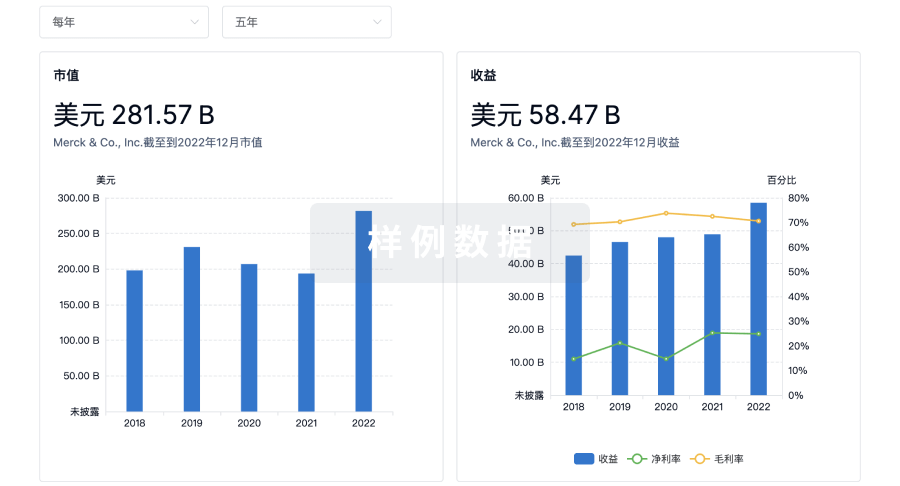
科研基金(NIH)
访问超过 200 万项资助和基金信息,以提升您的研究之旅。
登录
或

投资
深入了解从初创企业到成熟企业的最新公司投资动态。
登录
或
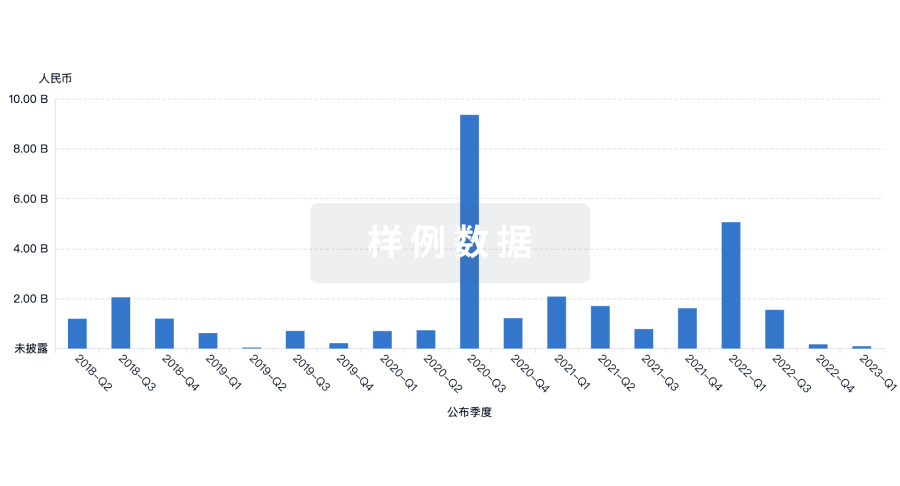
融资
发掘融资趋势以验证和推进您的投资机会。
登录
或
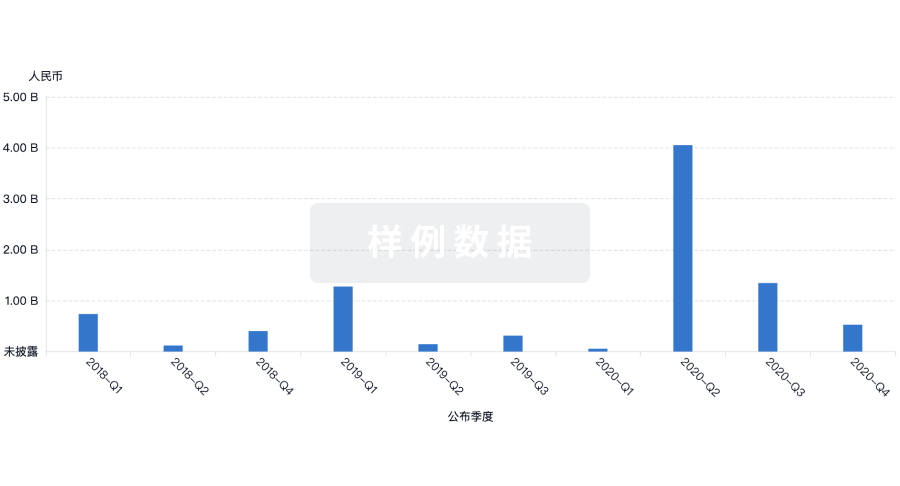
生物医药百科问答
全新生物医药AI Agent 覆盖科研全链路,让突破性发现快人一步
立即开始免费试用!
智慧芽新药情报库是智慧芽专为生命科学人士构建的基于AI的创新药情报平台,助您全方位提升您的研发与决策效率。
立即开始数据试用!
智慧芽新药库数据也通过智慧芽数据服务平台,以API或者数据包形式对外开放,助您更加充分利用智慧芽新药情报信息。
生物序列数据库
生物药研发创新
免费使用
化学结构数据库
小分子化药研发创新
免费使用
